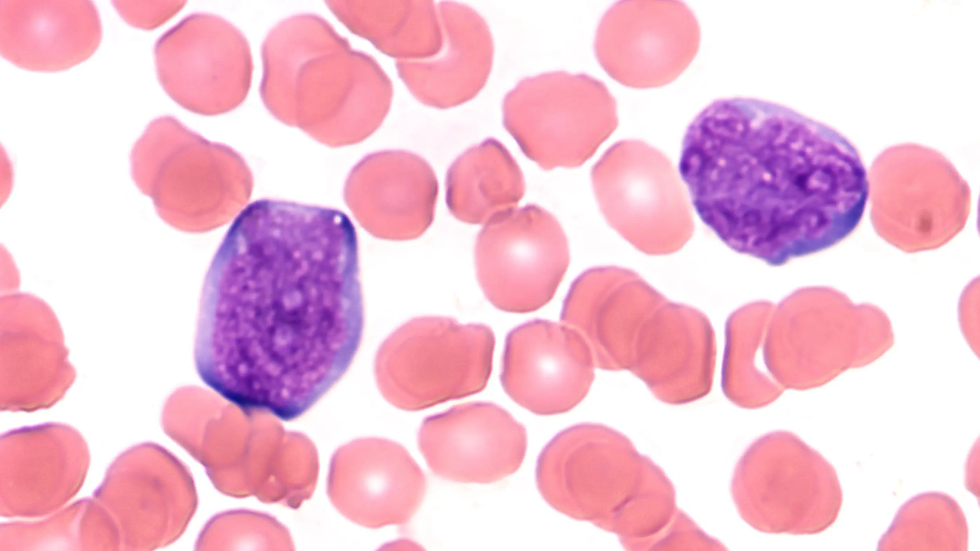
Microscopic image (photomicrograph) of a peripheral blood smear in patients with acute lymphoblastic leukemia (ALL) showing two blast cells (lymphoblasts). (Source: Shutterstock)
Acute lymphoblastic leukemia (ALL)
Definition of acute lymphoblastic leukemia (ALL)
Acute lymphatic leukaemia is a malignant degeneration and maturation disorder of white blood cells.
The body produces immature white blood cells (lymphocytes), so-called blasts. Currently, about one in every 100,000 people suffers from ALL. Typically, 80 percent of newly ill children are between three and five years old.
Symptoms of acute lymphoblastic leukemia (ALL)
The disease often starts with a sudden fever, patients feel fatigued and tired, and suffer from night sweats and a general feeling of illness with bone and joint pain. Headache and vomiting (especially when the central nervous system is involved) are often associated.
As a rule, bone marrow insufficiency progresses rapidly (reduction of bone marrow function), i.e. healthy blood formation becomes weaker with a deficiency of erythrocytes (red blood cells) and thrombocytes (blood platelets). This is usually associated with increasing general weakness and an increased tendency to bleed.
Lymph node enlargement can be felt upon manual examination. During the laboratory examination, lymphoblasts (i.e. lymphocytes activated by antigen contact), anemia and thrombopenia (reduced number of thrombocytes) can be detected in the blood count. The leukocytes (white blood cells) in the blood can be initially elevated, normal or even decreased. Due to the relative lack of healthy functional leukocytes, there is also an immunodeficiency often with severe and possibly life-threatening infections.
Treatment of acute lymphoblastic leukemia (ALL)
Conventional medical therapy provides for intensive cytostatic therapy (chemotherapy) and/or possibly cranial radiation immediately after diagnosis. Bone marrow transplants or stem cell therapy are also possible forms of treatment.
Whereas 30 to 40 years ago ALL killed the vast majority of patients within a few weeks, today it is curable with intensive chemotherapy in 40 to 50 percent of adults and about 80 percent of all children. Further improvements in the rate of recovery are possible with holistic treatment.
